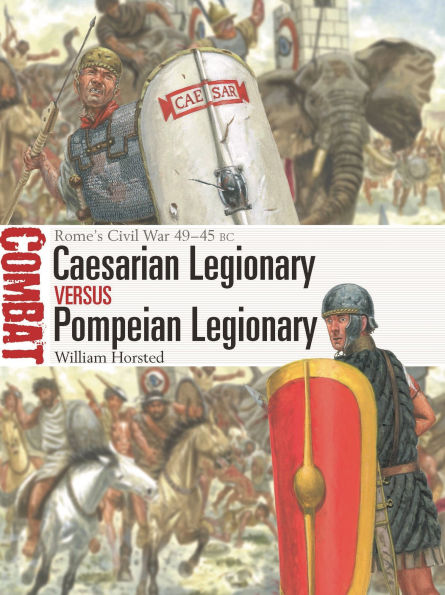Triggered by the tensions surrounding Julius Caesar's return to Rome from Gaul, the civil war that broke out in 49 BC convulsed the Roman world. Commanders and troops loyal to Gnaeus Pompeius Magnus, known as Pompey, confronted those following Caesar in a series of brutal battles across the Mediterranean, from Hispania to Greece.
William Horsted assesses the similarities and differences between the evolving Caesarian and Pompeian armies, which included not only Roman legions but also auxiliaries from Gaul, Numidia and elsewhere. Even after Pompey's defeat at Pharsalus (48 BC) and his subsequent death in Egypt, the conflict continued, with Pompey's relatives and followers continuing the fight until 45 BC. The two armies are examined in the context of three major clashes of the conflict: Dyrrachium (48 BC) in present-day Albania; Thapsus (46 BC) in modern Tunisia; and Munda (45 BC) in Spain. The text is complemented by specially commissioned colour artwork and mapping as well as archive photographs.
Triggered by the tensions surrounding Julius Caesar's return to Rome from Gaul, the civil war that broke out in 49 BC convulsed the Roman world. Commanders and troops loyal to Gnaeus Pompeius Magnus, known as Pompey, confronted those following Caesar in a series of brutal battles across the Mediterranean, from Hispania to Greece.
William Horsted assesses the similarities and differences between the evolving Caesarian and Pompeian armies, which included not only Roman legions but also auxiliaries from Gaul, Numidia and elsewhere. Even after Pompey's defeat at Pharsalus (48 BC) and his subsequent death in Egypt, the conflict continued, with Pompey's relatives and followers continuing the fight until 45 BC. The two armies are examined in the context of three major clashes of the conflict: Dyrrachium (48 BC) in present-day Albania; Thapsus (46 BC) in modern Tunisia; and Munda (45 BC) in Spain. The text is complemented by specially commissioned colour artwork and mapping as well as archive photographs.

Caesarian Legionary vs Pompeian Legionary: Rome's Civil War 49-45 BC
80
Caesarian Legionary vs Pompeian Legionary: Rome's Civil War 49-45 BC
80
Product Details
| ISBN-13: | 9781472867049 |
|---|---|
| Publisher: | Bloomsbury USA |
| Publication date: | 07/15/2025 |
| Series: | Combat , #82 |
| Pages: | 80 |
| Product dimensions: | 7.20(w) x 9.70(h) x 0.30(d) |
